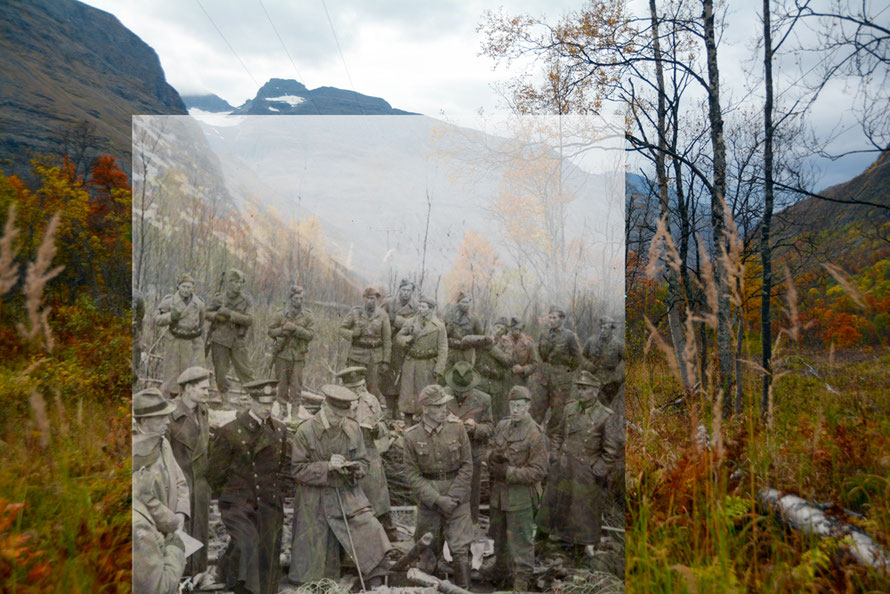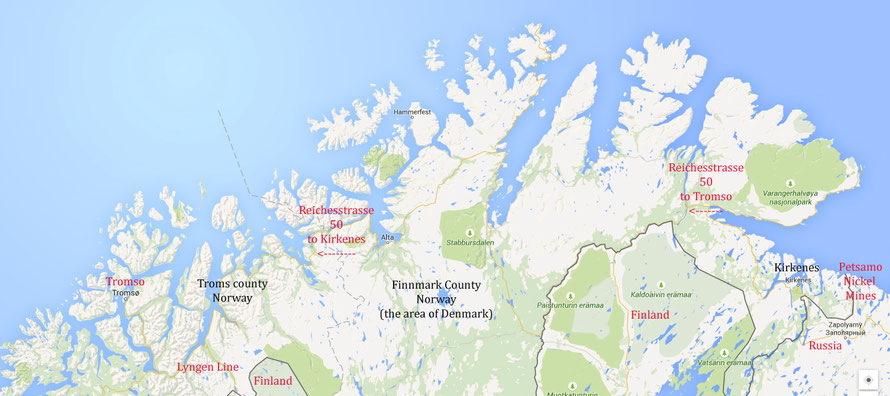The German Occupation of Arctic Norway in WWII

Introduction
As we drove down the east side of Storfjorden from Lyngenseidet in and out of the shade of the huge mountains on the opposite side of the fjord we saw a collection of huts and vans that reminded me of a South African township. I stopped to take a few photos. Maybe it is just a summer caravan park.
But in looking for information about it I looked eventually at the Storfjord Wikipedia site (not to be confused with the Storfjorden further south). Mention is made in 7-8000 Soviet prisoners of war who were kept in camps in this area, the worst being at a camp called 'Mallnitz' which I later learned was named after an Austrian ski resort.
I Googled this and a document in the UK National Archives popped up. This is called, 'Reports on conditions and events at Mallnitz Camp, Skibotn, Norway' in a file WO 331
1944-1946 War Office: Headquarters Allied Land Forces Norway, War Crimes Investigation Branch: Registered Files (A/G1/WCI
Series).
The War Crimes Investigation Branch found that there were four huts of 30 sq m (300 sq ft) at Mallnitz. Theses were a metre high, had three-tiered bunks, were made of turf and birch branches, and couldn't keep out the rain and snow. The prisoners were fed starvation rations.
A Norwegian newspaper report notes that 272 prisoners were sent to Mallnitz from the Lyngen Line work camps. Only 67 survived (Nordlys (14.04.2012).

This started a line of enquiry that went in two directions: firstly, what did happen in Northern Norway during the IIWW and secondly what was the fate of Russian prisoners in IIWW in Northern Norway. And thirdly, what was the detail of the Lyngen Line prisoners - how did they get there? what was there fate? and how was this similar or not to that of other Russian, Polish and Yugoslav PoWs?
For access to the seven pages in this section use the drop down menu at Arctic Norway/The German Occupation in WWII.Or follow links below:
1. Russian POWs in World War II and in Norway
2. Operation Nordlicht/Northern Light and the Destruction of Finnmark
3. The Norwegian Atlantic Wall
5. The Prison Camps of the Lyngen Line and Mallnitz Death Camp
6. Aftermath: The Nuremberg 'Hostage Trial' ruling on the scorched earth events in Finnmark
